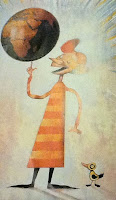Kindergartners at both schools are engaged in our safety unit. This is always one of those units that is so crucial and yet a little touchy. When I watch the sad news stories about missing kids or see another Amber alert on my devices, I am reminded that even though these conversations can be hard or even uncomfortable, they are so important.
Many of the students learn about personal space during PE classes. I expand on that by teaching they have 4 different personal spaces. That becomes the foundation for each of the subsequent lessons. The four spaces are also briefly reviewed in 1st and 2nd grade.
We begin with stranger space. The stranger space is 2 arm lengths. Students demonstrate that by stretching their arm out in front of them. The challenge here is giving students a healthy respect for danger, but not scaring them into a fear of public places. I stress that there are lots of good people in the world and just a few bad people (or scoopers). The problem is that you can’t tell by looking at someone if they are good or not so you have to be careful with everyone just in case. I share the book, Scoop, by Julia Cook with them. In the book they learn that no one can scoop you if they can’t reach you. That means we just keep a safe distance from people you don’t know. We don’t have to be scared or run away or scream, just keep far enough away they can’t touch you. And if a stranger steps toward you, then you simply step back. We also learn about call lists and never going anywhere with anyone you weren’t expecting without checking with someone on your call list. I also touch on other ways we can come in contact with strangers like the computer or phone. We talk about the importance of never giving out personal information like your address or your name.
The next space is our friend space. This is the space around us when we put our hands on our hips. It’s close enough to read together, play games together, and have conversations, but not close enough to be uncomfortable. This is the safe space for most of the people we know well. If we’re not sure, we can use the dinner rule. Would my family have this person over for dinner? If yes, then they are probably a friend. We review the stranger space and remember that if someone we don’t know steps toward our friend space we back up.
The third space is our family space. This is the space when we have are arms right next to us. I also call this the snuggle space. We talk about how it’s OK to snuggle up and watch a movie or give hugs and kisses to family, but we wouldn’t snuggle with our friends. We practice some polite ways to let our friends know when they are in our family space. Sometimes we just need to let them know they are in our space and it’s easily fixed. But, if we ask and that person keeps getting too close or makes us uncomfortable we should let a grown up know.
The last space is our private space. This is often where I get a few giggles because it’s the most uncomfortable to talk about but it’s so important that children know they have the right to say no! I define this as the areas of your body covered by a bathing suit. The kids demonstrate this space by giving themselves a hug. I stress to the kids that when you’re little, a parent might help bathe you or change a diaper; and if you have a problem a doctor might need to see those areas. But, otherwise no one has the right to be in those spaces except for you. If someone is in your private spaces you should do 3 things: 1) Say no using your big voice, 2) Move away immediately, and 3) Tell a grown up you trust. We practice the big voice, which is a low and loud way to say no. The big voice should sound really different than your play voice because it makes people look to see what’s going on. They are never to use the big voice except in an emergency. It’s not for the playground, but for those times when you really need someone to pay attention.
Sadly, not all child assault or abduction cases are strangers so it’s important that children know that its OK to speak up if even if a known adult makes you uncomfortable. We talk about trusting your instincts and listening to your uh-oh voice. When you get that funny feeling and know something doesn’t feel right, it’s always Ok to say no and then immediately tell another grown up you trust.
 So next year will brings cheers and tears all together for me. First the good news -
So next year will brings cheers and tears all together for me. First the good news - 






